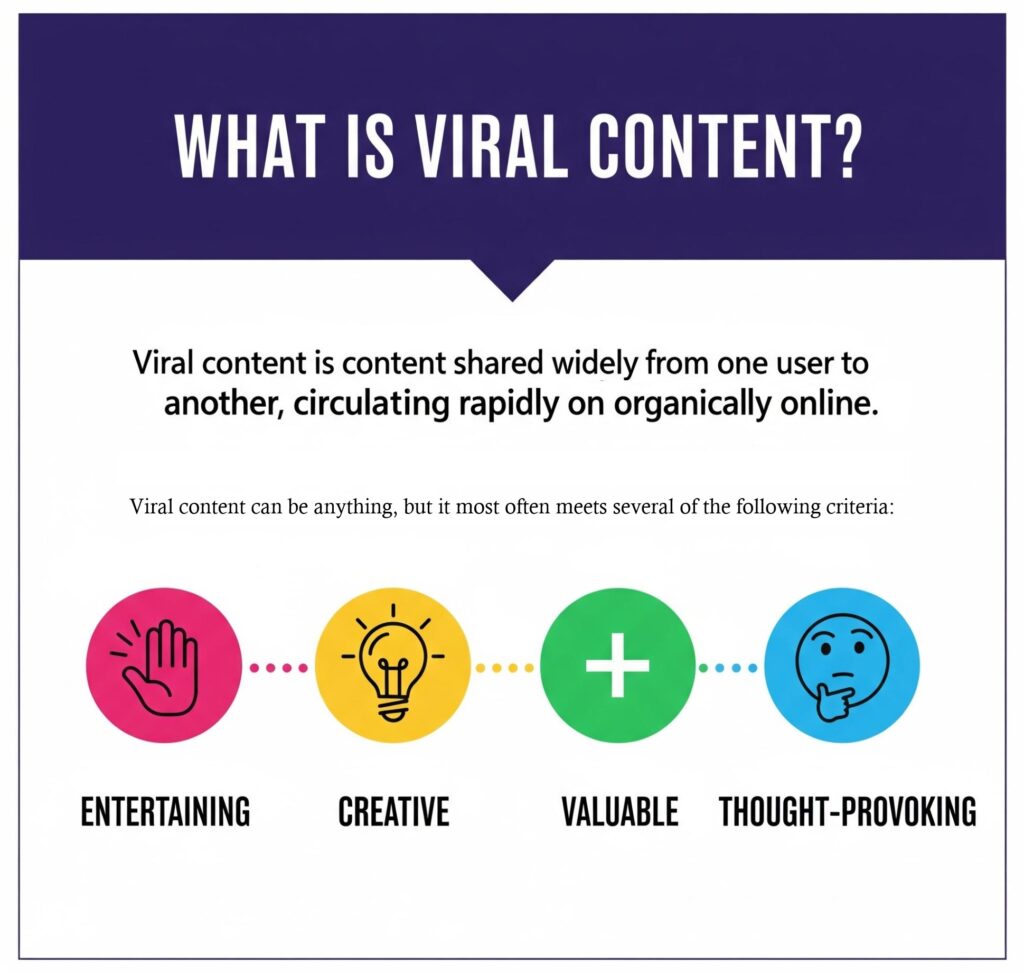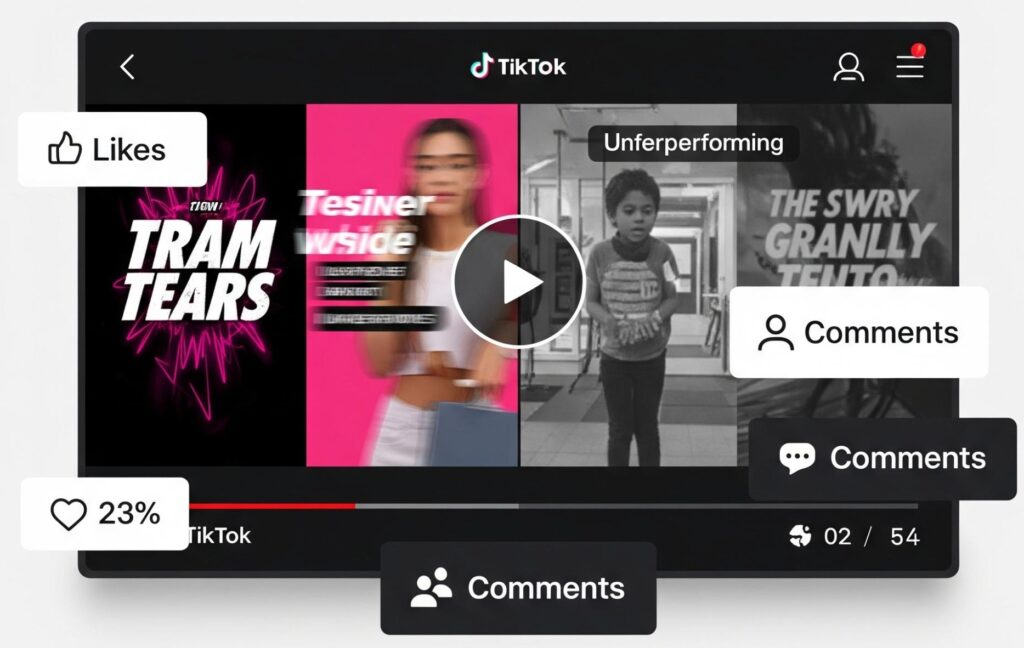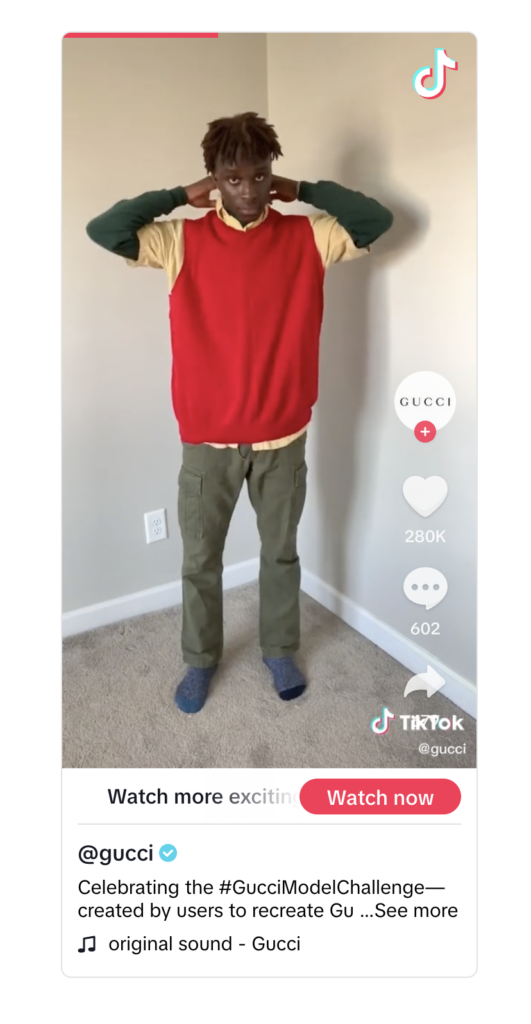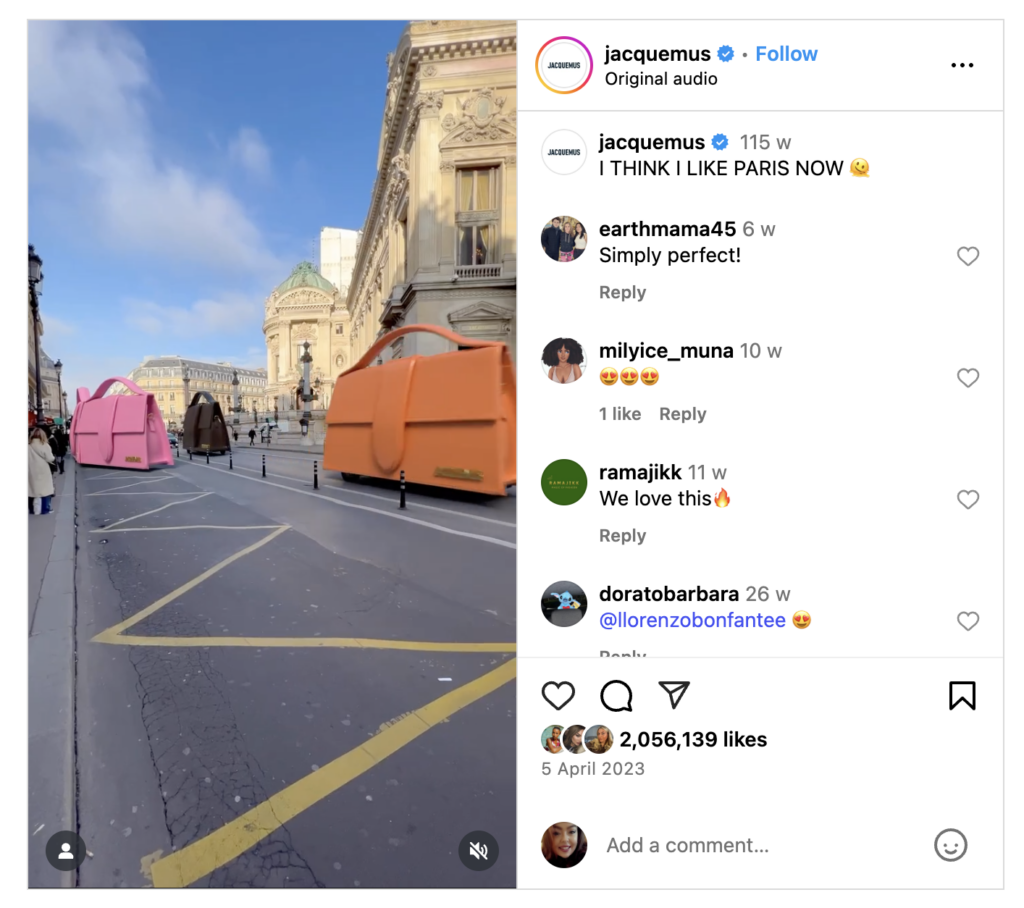Viral Content 101: What Format Works and What Gets Ignored
Some posts take off. They grab attention, spark reactions, and get passed around faster than you can track. Within hours, they’re everywhere. Others? They disappear almost as quickly as they’re published.
That’s what sets viral content apart.
It spreads. Not slowly, not gradually. It moves quickly and reaches audiences far beyond the original followers. One post turns into thousands of shares, then millions of views. And without spending heavily on ads or long marketing campaigns, brands suddenly find themselves in the spotlight.
What makes it so valuable is simple. Viral content gets people talking. It creates emotional reactions, drives engagement, and often shapes cultural moments. For businesses, creators, and marketers, it can be the most efficient and impactful way to get noticed.
Of course, going viral isn’t something you can force. But with the right understanding of what resonates and why people share, the chances of hitting that level of reach become a lot more realistic. So, let’s reveal everything you need to know about how to create viral content.
What Is Viral Content?

Viral content is any piece of media that spreads rapidly across the Internet through high levels of sharing and engagement. It could be a tweet, a video, a meme, a blog post, or even a screenshot. The format varies, but the outcome is the same: it reaches a massive audience in a short period of time.
It’s not just about views. True virality happens when people actively share the content with others. It’s passed on by real users, not boosted through paid promotion. The distribution feels organic because it is organic. That’s part of what makes it so effective. People trust content shared by peers more than anything that comes straight from a brand.
A few key traits tend to show up across most viral content:
- Strong emotional pull – Whether it’s funny, heart-warming, shocking, or relatable, viral content taps into real emotion.
- Simplicity – It’s easy to understand, quick to consume, and doesn’t require context.
- Shareability – It includes something people want to pass on, like a clever insight, a relatable joke, or a surprising fact.
- Timing – It often connects to current events, trends, or cultural moments.
- Uniqueness – It offers something different, unexpected, or fresh.
It’s also worth pointing out that viral content doesn’t have to be polished or produced at a high level. In fact, some of the most viral moments have come from off-the-cuff videos, casual tweets, or user-generated content. Authenticity tends to matter more than production value.
So while the Internet is flooded with content every second, only a small slice breaks through. That’s what makes virality so sought after. When it happens, it doesn’t just reach people, it sticks with them.
The Science Behind Virality
Viral content isn’t just lucky timing or creative flair. There’s actual psychology behind why certain pieces of content spread, while others fade out. Ultimately, it comes down to how humans respond emotionally, socially, and even neurologically to what they see online.
So, what makes content go viral?
Emotional Triggers
Emotion is one of the biggest drivers of sharing. When people feel something strongly, they’re more likely to pass it on. Not all emotions have the same effect, though. Research consistently shows that high-arousal emotions, the ones that activate the body, are more likely to make content go viral.
These include:
- Awe – Content that surprises, impresses, or reveals something unexpected
- Amusement – Humour works, especially if it’s clever or relatable
- Anger – Controversial or challenging content often spreads fast
- Fear – Alarming facts or warnings trigger urgency and sharing
- Empathy – Heartfelt stories that spark compassion also perform well
What doesn’t work as well? Low-arousal emotions like sadness or content that feels flat or overly neutral. People don’t typically share something that leaves them indifferent.
Social Currency
People share content that makes them look good. That might sound shallow, but it’s true. Whether it shows they’re in the know, that they’re funny, or that they care about an issue, content that supports someone’s personal image or identity tends to be more shareable.
If a post makes someone look smart, relatable, culturally tuned in, or emotionally intelligent, it’s far more likely to be reposted.
Relatability and Identity
Content that taps into shared experiences spreads because it reflects how people see themselves. Think of common struggles, generational humour, inside jokes, or niche references. When someone sees a post and thinks, “That is so me,” they’ll want to share it with others who feel the same way.
Practical Value
Tips, hacks, and useful insights often get shared because they offer immediate value. If content teaches someone something quickly or helps solve a problem, they’re likely to pass it along. That usefulness becomes part of what makes it worth sharing.
The Element of Surprise
Anything that breaks expectations or flips something familiar into something fresh grabs attention. Unexpected twists, unusual comparisons, or original formats tend to stand out in a scroll-heavy environment.
At the centre of it all is one question: how does this make someone feel? When the emotional and social instincts kick in, people hit the share button without overthinking it. That’s where virality begins.
Viral Content Formats That Work
Certain formats have consistently shown up in viral success stories. They’re not fool proof, but they do have strong track records when paired with the right message, tone, and timing. These content types tend to spark engagement and, more importantly, inspire people to share.
1. Short-Form Video

Video is one of the most dominant formats online, especially short-form. Quick clips are easy to consume and easy to share. Whether it’s a punchy skit, a clever visual trend, or a simple reaction video, the best ones usually get to the point fast and deliver a strong emotional hit. People don’t need context or commitment. A few seconds is enough to hook them.
2. Memes and Humour-Based Content

Humour travels fast online. Memes, funny captions, and sarcastic takes on relatable situations often spread because they’re instantly recognisable and easy to remix. The best memes feel like inside jokes that everyone’s in on, which makes people want to share them with friends to say, “This is so us.”
3. Opinion or Commentary Threads

Text-based posts, particularly well-written threads or strong opinions, tend to catch fire when they address trending topics or challenge the norm. If someone says what others are thinking but aren’t saying out loud, it cuts through the noise. These formats can work really well for storytelling, humour, or even mini-rants.
4. Visual Slideshows or Carousels

When done right, a swipe-through format is incredibly engaging. It lets you build up a story or message step by step. This works well for lists, how-tos, quotes, or storytelling content. The key is keeping each slide or panel simple and clean, so the flow feels natural.
5. Challenges and Trends

When a format encourages participation, like a challenge, soundbite trend, or visual format that others can replicate, it has viral potential built in. It’s not just about viewing. It’s about joining in. That’s a major part of what fuels these formats.
6. Unexpected Juxtapositions

Formats that combine opposites often get shared because they stand out. This could be a serious topic delivered in a humorous tone, or a complex idea explained with childlike simplicity. That unexpected pairing breaks the scroll and gets people talking.
7. Crowd Participation or User Input

Anything that involves the audience directly, such as voting, caption contests, opinion polls, or stitched responses, taps into the power of community. When people feel like they’re part of something, they’re more likely to share and engage.
The format alone won’t make something go viral, but it can give the content a stronger foundation. The key is using a format that matches the message and makes it easy for people to connect with it instantly.
Content Formats That Struggle to Go Viral
Let’s be honest. Not everything is built for sharing. Some formats tend to fall flat no matter how polished they look. They might be useful, well-structured, or technically sound, but they don’t spark that urge to pass it on.
If you’re developing a viral content strategy for your brand, these are the formats you need to rethink or approach differently.
1. Overly Polished Corporate Videos
You’ve probably seen them. Glossy transitions, dramatic music, scripted voiceovers, and yet, no one shares them. Why? Because they feel like ads. They look like something made by a brand, not something made for people. Audiences scroll past the moment they sense they’re being sold to.
2. Text-Heavy Infographics
Infographics used to do well. But the format has lost momentum, especially the ones packed with stats, tiny fonts, and design elements fighting for space. When people are on mobile, their attention spans are short. If something looks dense or hard to digest, it’s not going to get shared.
3. Generic “Motivational” Posts
You’ve seen them. Black and white quotes over blurry landscapes. Vague captions about success or mindset. While the intent might be good, most of these posts blur into each other. Unless there’s a unique voice or original insight, they rarely catch on.
4. Long-Form Articles Without Visual Hooks
Not all blogs or articles are doomed to low engagement, but when they’re long, unbroken walls of text, they’re unlikely to go viral. People skim. They look for visual cues. They want rhythm. Without that, even strong writing can get overlooked.
5. Overused Templates and Formats
There’s a big difference between following a trend and using something that’s already worn out. If your content looks like everything else in the feed, it’s forgettable. Templates might save time, but if they strip away personality, they kill your chances of a share.
6. Purely Informational Posts Without Emotion
It’s great to teach or explain something, but if the post reads like a textbook, it’s unlikely to spread. People share what they feel. If your content is all logic and no feeling, it might get bookmarked, but it won’t be passed around.
7. Stock Visuals or Generic Imagery
If the visuals look staged or artificial, people disconnect. Real moments, real reactions, or creative visuals stand out far more. A flat stock image with a vague caption doesn’t make people stop scrolling, and definitely doesn’t inspire sharing.
Think of it this way. If the format feels distant, formal, or overly controlled, it probably won’t go viral. People are drawn to authenticity, personality, and a sense of realness. If that’s missing, the content might be technically “good,” but it won’t catch fire.
How to Create Viral Content: Best Strategies
There’s no magic button to make something go viral, but there are patterns behind the content that does. It’s not just about luck. It’s about strategy, timing, and understanding what actually moves people to share.
If you want to increase your chances of creating viral content, here are some of the best viral content strategies to focus on.
1. Start with Emotion
Ask yourself one thing before you publish: what do you want people to feel? Not just think, but feel. Viral content usually sparks a strong emotional reaction, whether that’s joy, outrage, awe, or empathy. Aim for that gut-level response. If it feels flat or forgettable, it probably won’t move.
2. Focus on Shareability, Not Just Value
Value is important. But if it’s not shareable, it won’t spread. Try shaping your content in a way that makes people look good or feel smart when they share it. Whether it’s a clever insight, a powerful quote, or a well-crafted joke, make it something people want to be associated with.
3. Keep It Simple and Clear
People don’t share what they don’t understand. Complexity kills momentum. Strip your message down to the clearest version of itself. Use simple language. Use visual structure. Cut anything that doesn’t add clarity or punch.
4. Timing Is Everything
Relevance can make or break your content. Jumping on trends, news, or cultural moments can massively boost your chances of virality. But don’t just mimic; add something original to the conversation. Make sure your voice adds value, not noise.
5. Create for the Platform, Not Just the Message
Every platform has its own behaviour. What works on one might flop on another. Think about where your audience is and how they consume content there. A thread that hooks people on one channel might need to be a short, punchy video somewhere else.
6. Encourage Interaction
Content that invites people in, through questions, challenges, or prompts, naturally creates more engagement. Engagement helps spread. If someone replies, tags a friend, or participates, the algorithm notices.
7. Be Bold with Your Angle
Safe content rarely gets shared. That doesn’t mean being reckless, but it does mean having a clear voice and not being afraid to take a stance. Whether that’s humour, honesty, or a hot take, people are drawn to opinions that feel real.
8. Test, Tweak, Repeat
Virality is unpredictable, so the smartest approach is to keep creating. Test different styles, formats, and tones. Pay attention to what resonates, and refine from there. One post might flop. The next might take off. Consistency gives you more chances to strike.
Viral content marketing is not about chasing trends or copying what’s already worked for someone else. It’s about building content that feels relevant, emotional, and real; the kind of thing someone sees and wants to pass on without thinking twice.
Measuring Viral Content Success
When something goes viral, it’s tempting to focus on vanity numbers, but real success goes deeper. Data-driven content virality means looking beyond surface metrics and understanding how content actually performs, spreads, and influences behaviour. These are the key indicators worth tracking:
- Reach and Impressions – The total number of times your content was seen. Viral content typically causes a sharp spike compared to your usual reach.
- Shares – The strongest sign of virality. If people are sharing, they’re actively helping to spread your message.
- Engagement Rate – A combination of likes, comments, saves, and clicks. High engagement suggests your content sparked real interest, not just a passing glance.
- Traffic Spikes – If the content includes a link, check your site or page analytics. Sudden jumps in traffic often come from viral exposure.
- Follower Growth – A surge in new followers shows that people didn’t just like one piece of content; they wanted to see more from you.
- Mentions and Tags – Look for conversations happening around your content. Are people tagging others or creating their own versions? That’s a sign your idea is travelling further.
- Watch or Read Time – For longer videos or written pieces, this tells you if people stuck around. A viral post that’s fully consumed is far more valuable than one that’s only skimmed.
It’s not about chasing one number. It’s about recognising the full picture: how your content moved, who it reached, and what kind of response it triggered. That’s how you know if your viral moment truly paid off.
Real Campaigns That Went Viral & Why They Worked
If you’re in need of some inspiration, we’ve got some viral content marketing examples to help! These brands have hit the sweet spot when it comes to viral content marketing.
Gucci’s #GucciModelChallenge
Gucci hopped on an organic TikTok trend when user Morgan Presley kicked off the #GucciModelChallenge. She showcased how to mimic the runway look using ordinary clothes.

Image credit: Gucci TikTok
Gucci jumped in by amplifying it: showcasing the best entries, resharing community content, and turning it into an interactive campaign.
It sparked creativity across TikTok, it showed Gucci listening, not just broadcasting, and it created a sense of community participation.
Jacquemus’s Surreal CGI Bags Take Over (2023)
In 2023, Jacquemus transformed its social feed into a surreal visual feast. They used cutting-edge CGI to make their signature bags appear massive; a handbag replaced by a subway, another lounging like a city bus on Parisian streets.

Image credit: Jacquemus Instagram
- The unexpected scale created a playful sense of wonder
- It became a trending topic, with users debating what was real
- With content created by the designer himself, it felt personal and engaging
- The CGI execution was sleek enough to pass as real, adding to the intrigue
What stood out? This wasn’t a staged campaign. It felt like fresh art; something people couldn’t resist sharing, thanks to its visual boldness and Jacquemus’s human touch.
Making Your Content Worth Sharing
Viral content isn’t about chasing algorithms or trying to copy what’s already been done. It’s about understanding what people respond to and building from there.
Formats matter. Emotion matters more. But what really separates viral content from everything else is intention. When something resonates, surprises, or invites people in, they don’t just engage with it. They pass it on.
Here’s what to keep in mind:
- Choose formats that fit your message, not just what’s trending
- Build emotion into the core of your content, not just the headline
- Track the right metrics to see what’s actually working
- Stay original. Even a small creative twist can change how people react
- Be consistent. Viral hits don’t come from one-off posts; they come from momentum
The next viral moment doesn’t need to be loud. It just needs to feel real.
So if your content strategy’s been feeling flat, maybe it’s time to stop playing it safe. Start creating the kind of content you’d want to share. That’s where virality begins.
Want your content to actually get shared, talked about, and remembered? As a leading creative agency, we help brands craft content that stands out and sticks. If you’re ready to rethink your strategy and create work that’s built to spread, reach out to the team here at Appnova today!
Subscribe To Us
Our Services
Categories
Subscribe To Us
Contributors
Categories

This website uses cookies so that we can provide you with the best user experience possible. Cookie information is stored in your browser and performs functions such as recognising you when you return to our website and helping our team to understand which sections of the website you find most interesting and useful. Third party cookies such as Google Analytics is also used on this site to provide analytics in order to better understand the user engagement on our site.
You can adjust all of your cookie settings by navigating the tabs on the left hand side.
Strictly Necessary Cookie should be enabled at all times so that we can save your preferences for cookie settings.
If you disable this cookie, we will not be able to save your preferences. This means that every time you visit this website you will need to enable or disable cookies again.







0.Comments